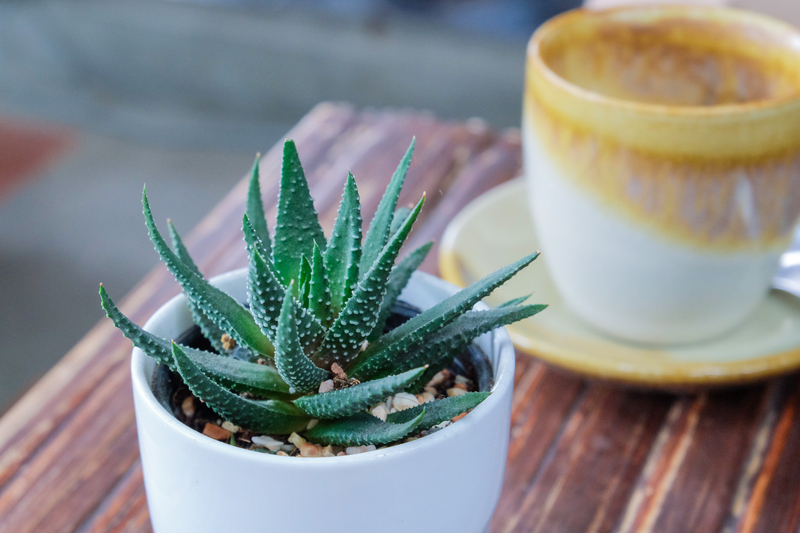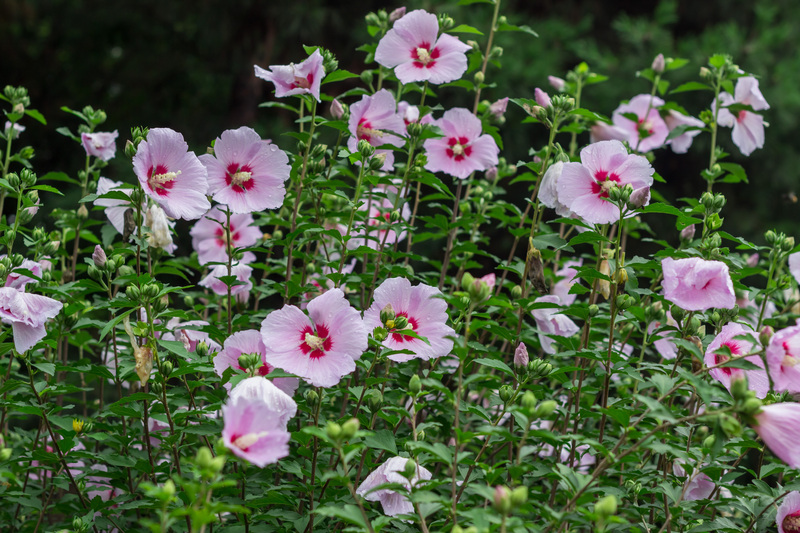Revitalize Your Orchid Care Knowledge Base
Posted on 26/09/2025
Revitalize Your Orchid Care Knowledge Base
Are your orchids looking lackluster, or are you simply seeking to elevate your orchid care skills? Orchids are beloved for their exquisite beauty and unique diversity, but flourishing these exotic blooms at home requires the right knowledge and dedication. In this comprehensive guide, we'll revitalize your orchid care knowledge base, providing fresh insights, up-to-date practices, and helpful tips for both novice gardeners and seasoned enthusiasts. Whether you call yourself an "orchid lover," "orchid parent," or "orchid grower," there is always room to grow in your understanding and passion.

Understanding Orchids: The Foundation of Proper Care
To refresh and update your orchid care base, it's essential to begin with a solid foundation. Orchids (family Orchidaceae) are one of the largest plant families in the world, boasting over 25,000 species. From the familiar Phalaenopsis to the dramatic Cattleya, these diverse plants require specific care to truly thrive.
Major Types of Orchids for Home Growers
- Phalaenopsis (Moth Orchid) - Easiest for beginners, long-lasting blooms
- Cattleya - Known for large, fragrant blossoms
- Dendrobium - Popular for prolific flowering spikes
- Oncidium - Often called dancing lady orchids
- Vanda - Dramatic, often fragrant, and loves bright light
Identifying your orchid's species or hybrid is the essential first step for proper care. Many issues arise when a care regimen is not matched to the plant's needs. If you are unsure about your orchid's identity, consult plant labels, nursery staff, or reputable online orchid identification resources.
Essential Elements of Modern Orchid Care
Let's update your orchid care knowledge base with the latest best practices, emphasizing scientific advances and tried-and-true techniques.
Light Requirements: The Fuel for Orchid Growth
Successful orchid cultivation starts with understanding light intensity and duration:
- Phalaenopsis: Prefers bright, indirect sunlight. Ideal near east or north-facing windows.
- Cattleya and Vanda: Require more sun -- they do well with filtered south or west exposure. Beware of leaf burn from direct midday sun!
- Dendrobium and Oncidium: Enjoy medium to bright light conditions, but not direct rays.
Tip: If orchid leaves appear dark green, they likely need more light. If they are yellowish or red-tinged, lower the light intensity.
Watering Wisdom: A Key to Orchid Health
Over-watering is the top killer of orchids. To revitalize your orchid care regimen, adopt these advanced watering practices:
- Water early in the day, allowing roots and leaves to dry before nightfall.
- Use room temperature water, and avoid soft, salty, or heavily chlorinated tap water. Rainwater or distilled water is best.
- Stick your finger into the media - if it feels dry an inch below the surface, water. Never allow roots to sit in standing water; proper drainage is vital.
- Humidity trays or grouping orchids together can boost ambient moisture for species requiring higher humidity.
Remember: Orchid roots prefer to dry out slightly between waterings. Adapt your schedule seasonally--less water in winter, more in active growth periods.
Optimum Temperatures for Thriving Orchids
Different orchid types thrive at varying temperature ranges:
- Phalaenopsis: 65-80?F (18-27?C) during the day, 60-65?F (16-18?C) at night.
- Cattleya, Dendrobium, Oncidium: 70-85?F (21-29?C) by day, 55-65?F (13-18?C) by night.
Ensure no dramatic temperature fluctuations, and watch for cold drafts or heat spikes that can stress your plants.
Humidity: Mimicking the Orchid's Natural Environment
Orchids often hail from humid rainforest regions. Aim for 40%-70% humidity, depending on species. Improve ambient humidity by:
- Using a humidity tray (a shallow tray filled with water and pebbles under pots)
- Misting leaves (avoid pools of water in leaf axils)
- Grouping multiple plants together
Monitor with a digital hygrometer for precision care.
Choosing the Proper Potting Medium & Repotting with Confidence
Orchids are not potted in soil. Most require a well-draining mix:
- Bark chips: Most common, balances moisture & drainage
- Sphagnum moss: Holds moisture for orchids that prefer dampness
- Perlite, coconut husk: Ensures aeration
- Some Vanda types may grow bare-root in baskets
Repot every 1-2 years, or when the medium breaks down or roots overgrow the pot. Choose pots with drainage holes to prevent rot. Use clear pots to monitor root health; happy roots are firm, green, or silvery white.
Advanced Orchid Care Knowledge: Ethereal Blooms Year After Year
If you want to level up your orchid expertise, mastering these techniques can make all the difference:
Fertilization: Feeding for Peak Performance
Orchids are light feeders, but they do benefit from regular fertilization. The "weakly, weekly" rule suits most species: feed with a diluted ( 1/4 to 1/2 strength) balanced orchid fertilizer once a week during active growth. In winter, reduce frequency to every 3-4 weeks. Flush the potting medium monthly with plain water to avoid salt buildup.
Mastering the Orchid Bloom Cycle
To revitalize your orchid care, understanding bloom triggers is essential. Many orchids need a contrast between day and night temperatures to initiate flowers--called a "diurnal drop." For example, Phalaenopsis often require a 10?F (6?C) drop to kickstart blooming. Don't be surprised if your orchid skips blooming when consistent temperatures are maintained!
Pest & Disease Defense: Staying Proactive
Healthy orchids are less susceptible to pests, but vigilance is key:
- Mealybugs, scale insects, aphids, and spider mites are common. Combat with neem oil or horticultural soap--never use harsh chemicals.
- Monitor for root rot and leaf spots, often caused by overwatering or fungal/bacterial infections. Remove affected tissue promptly and adjust watering habits.
- Isolate new or ailing plants to prevent spread.
Pruning, Cleaning & General Upkeep
- Trim dead flower spikes or yellow leaves with sterilized scissors to prevent disease.
- Wipe leaves gently with a damp cloth to remove dust and boost photosynthesis.
- Inspect roots during repotting. Healthy roots are plump and colored white/green; brown, mushy roots should be pruned away.
Expert Tips: Reviving "Dying" Orchids
Even the most experienced orchid growers face setbacks. Here's how to revitalize a struggling orchid and update your rescue skills:
Symptoms and Solutions
- Wrinkled Leaves: Check roots--they may be desiccated from underwatering or rotten from overwatering.
- No Flowers for Years: Increase light exposure, feed regularly, and provide a nighttime temperature drop.
- Black Spots or Rot: Isolate the plant, remove affected tissue, repot in fresh medium, and improve air circulation.
- Pale or "Burnt" Leaves: Adjust light--too much sun causes burning, too little leads to paleness.
Orchid Revival Step-by-Step
- Gently unpot and inspect roots.
- Prune away all dead, soft, or mushy roots with sterilized scissors.
- Soak remaining roots in a fungicide solution for 10-15 minutes.
- Repot in fresh, airy medium appropriate for the orchid type.
- Place in bright, indirect light. Gradually reintroduce watering, only when media is nearly dry.
Patience is crucial - It may take several weeks or months for new growth to appear, but many "dying" orchids bounce back with proper care.
Expand Your Orchid Knowledge Base: Beyond the Basics
Updating your orchid care knowledge base goes beyond home care. Explore advanced topics and communities:
Explore the Orchid World
- Join orchid societies and attend local shows for hands-on learning and expert advice.
- Read specialized orchid care books, magazines, and reputable websites.
- Engage with orchid forums or Facebook groups to ask questions and share experiences.
- Experiment with advanced techniques like mounting, hybridizing, or terrarium growing.
Environmental Awareness
Many orchids in the wild are threatened by habitat loss and illegal collection. Support sustainable orchid growers and choose responsibly sourced plants.

Frequently Asked Questions: Revitalizing Your Orchid Care Knowledge Base
How often should I repot my orchid?
Most orchids benefit from repotting every 1-2 years. The best time is just after blooming or if the potting medium breaks down and roots outgrow the container.
Why are my orchid's roots exposed to air?
Many orchids are epiphytes, adapted to grow with their roots exposed. These aerial roots absorb moisture and nutrients from the air -- do not trim healthy aerial roots.
Can I use regular houseplant fertilizer?
Stick to orchid-specific fertilizers. Ordinary plant food may be too strong and cause root burn due to higher salt content.
How do I encourage my orchid to rebloom?
Give your orchid a period of lower night temperatures, increase feeding and light, and ensure it is not pot-bound or in depleted medium.
Conclusion: Rejuvenate and Elevate Your Orchid Journey
Revitalizing your orchid care knowledge base means embracing up-to-date science, practical techniques, and a loving curiosity for these wondrous plants. Whether you're nurturing a single Phalaenopsis on the windowsill or tending a large collection, the key is to always learn, observe, and adapt. With renewed orchid wisdom, your blooms will flourish more brilliantly than ever before.
Let your adventure with orchids blossom into a lifelong passion. Happy growing!

